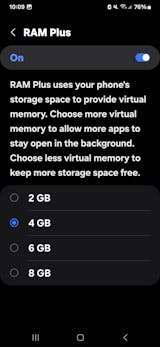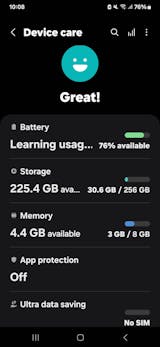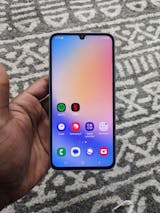Be the first to hear about the newest phones!

A Comprehensive Guide to Choosing the Perfect Smartwatch
Compatibility
The first and most crucial factor to consider when purchasing a smartwatch is compatibility. Not all smartwatches are compatible with every smartphone. Ensure that the smartwatch you choose works seamlessly with your mobile device. The compatibility is typically split into two categories: iOS and Android. For example, Apple Watch is designed to work exclusively with iPhones, while most other smartwatches, such as those from Samsung, Google or Xiaomi, are compatible with Android and iOS devices.
Design and Build
Smartwatches come in a variety of styles and sizes, so it's essential to select one that matches your personal style and daily activities. Consider the following factors:
- Size:
Choose a size that fits comfortably on your wrist. A smaller, sleek design might be suitable for formal occasions, while a larger watch with a sporty look might be ideal for fitness enthusiasts.
- Material:
Most smartwatches are made of materials like stainless steel, aluminum, or plastic. Each material has its own durability and aesthetic appeal, so choose one that suits your lifestyle.
- Display:
Decide between OLED, AMOLED, or LCD displays, each with its pros and cons. OLED and AMOLED offer vibrant colors and deep blacks, while LCD may save battery life.
- Straps:
Some smartwatches allow you to change straps easily, so you can switch between a sporty band for workouts and a leather one for formal events.
Display and Touchscreen
The display is one of the most prominent features of a smartwatch, and its quality and type can significantly impact your user experience. Here are some considerations:- Screen Type:
AMOLED and OLED displays tend to offer better image quality and power efficiency, making them ideal for most smartwatches. They provide vibrant colors and deep blacks.
- Resolution:
A higher resolution ensures sharper and more detailed visuals, which can be essential for reading text and viewing notifications.
- Always-On Display:
Consider whether the smartwatch offers an always-on display mode, allowing you to glance at the time and information without raising your wrist.
- Touchscreen:
Ensure the touchscreen is responsive and intuitive for smooth navigation. Some watches also offer additional control buttons or rotating bezels for an alternative input method.
Battery Life
The battery life of a smartwatch is a critical factor, especially if you plan to use it for extended periods or during fitness activities. Battery life can vary widely, from just a day to several weeks. Consider your daily routine and how often you're willing to charge your device.
- Basic Functions:
Smartwatches that primarily handle notifications and basic tasks may last longer on a single charge.
- GPS and Fitness Tracking:
If you're into fitness tracking, GPS, heart rate monitoring, and continuous activity tracking can significantly impact battery life.
- Energy-Saving Features:
Some watches offer power-saving modes, which can extend the battery life when you're not actively using the smartwatch.
Fitness and Health Features
For many users, smartwatches have become essential tools for monitoring health and fitness. Consider the following features when making your choice:
- Heart Rate Monitoring:
Most modern smartwatches come equipped with heart rate sensors, which are essential for tracking your exercise intensity and overall health.
- GPS:
Built-in GPS is crucial for tracking your outdoor activities and accurately measuring distances and routes.
- Fitness Tracking:
Look for a watch that supports a wide range of fitness activities, such as running, cycling, swimming, and more.
- Sleep Tracking:
Sleep tracking can provide valuable insights into your sleep patterns and help you improve your overall sleep quality.
- ECG and Blood Pressure Monitoring:
Some advanced smartwatches offer ECG and blood pressure monitoring features, which can be beneficial for those with specific health concerns.
App Ecosystem
The available apps and third-party integrations can significantly enhance your smartwatch's functionality. Check if the smartwatch has an extensive app ecosystem and whether it supports the apps you need for your daily activities. For example, if you're a runner, ensure it supports your favorite running and fitness tracking apps.Connectivity
The connectivity options of a smartwatch can influence your experience and its capabilities. Common connectivity features include:
- Wi-Fi:
Wi-Fi connectivity allows your smartwatch to stay connected to the internet and receive updates even when your smartphone is not nearby.
- Bluetooth:
Bluetooth is essential for connecting your smartwatch to your smartphone, enabling call notifications, message syncing, and other features.
- Cellular Connectivity:
Some smartwatches offer standalone cellular connectivity, allowing you to make calls, send messages, and stream data without your smartphone.
Water Resistance
If you plan to use your smartwatch for swimming or other water-related activities, it's crucial to choose a model with water resistance. Look for an IP rating, which indicates the degree of water resistance. For swimming, a watch with an IP68 rating is generally suitable, while for diving or snorkeling, an IPX7 or higher rating is recommended.
Operating System
The operating system (OS) of a smartwatch can significantly impact its performance and app compatibility. The two most popular smartwatch operating systems are watchOS (for Apple Watch) and Wear OS (for many Android-based watches). Make sure to choose a watch with an OS that aligns with your smartphone for seamless integration.
Price and Value
While it's tempting to go for the latest and most feature-packed smartwatch on the market, it's crucial to consider your budget and the value you'll derive from the device. Expensive models may have numerous features you don't need, so prioritize the features that matter most to you.
Conclusion
Choosing the perfect smartwatch requires careful consideration of your specific needs, preferences, and budget. With this comprehensive guide, you're now equipped with the knowledge to make an informed decision. Remember to focus on compatibility, design, display, battery life, fitness and health features, app ecosystem, connectivity, water resistance, operating system, and price. By assessing these factors, you'll be well on your way to finding the ideal smartwatch that seamlessly integrates with your lifestyle and enhances your daily activities.
Find the smartwatch that fits your lifestyle with our selection of Samsung and Xiaomi smartwatches!
















Leave a comment